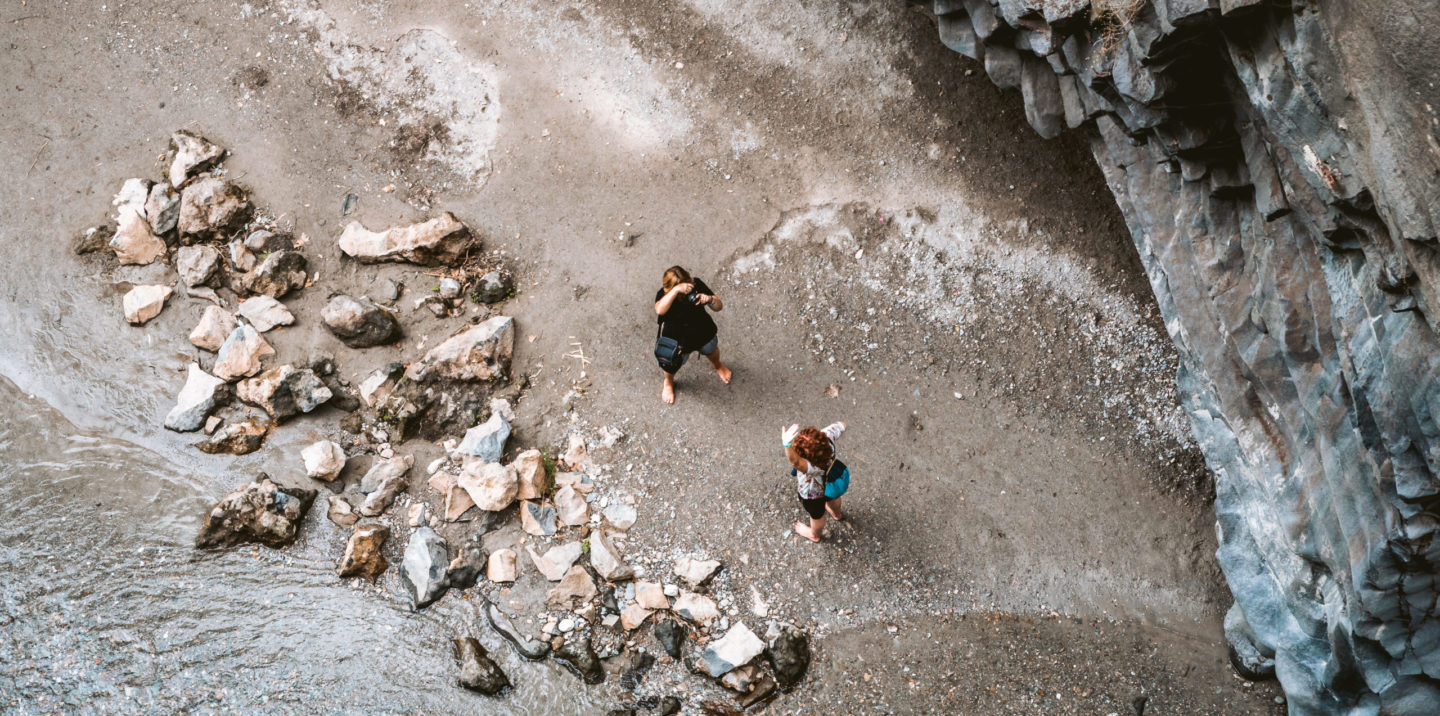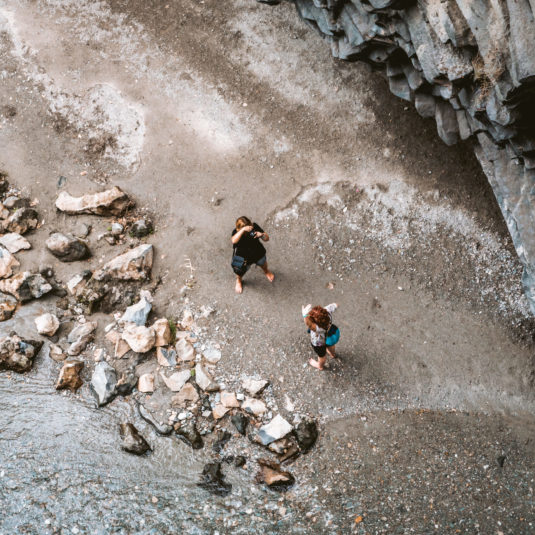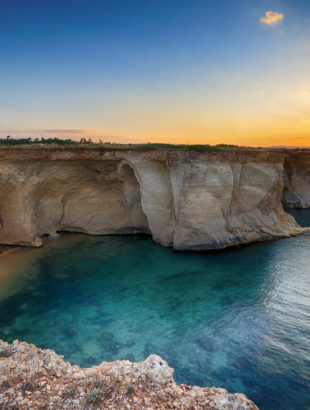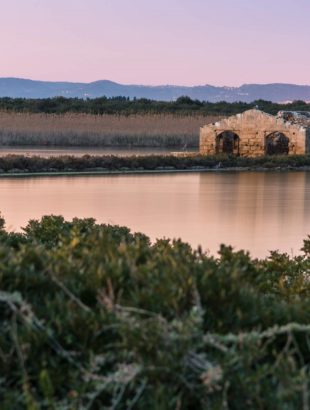Not so far from Mount Etna, the highest European volcano, is the geologic, botanic river park of Alcantara. Each year, this large park attracts millions of visitors thanks to its unusual architecture shaped over time by the goodwill of Mother Nature. People mostly wander there to marvel at the breathtaking Alcantara Gorges.
Follow me to discover this hikers’ little paradise.
Table of contents- The unusual natural architecture of the Alcantara (“Al Qantarah”)
- A landscape both narrow and gigantic, on the outskirts of Naxos
- The countless things to do in the Alcantara River Park
- The wide diversity of flora and fauna
- Myths and legends of the Alcantara
- Useful information
The unusual natural architecture of the Alcantara (“Al Qantarah”)
The Natural Park is named after the Alcantara river, which rises at altitudes over 1,000 meters in the eastern region of the Nebrodi Mountains, in Floresta. It runs through the range of the Peloritani Mountains and the volcanic massif of Etna, before reaching San Marco (Calatabiano) about fifty kilometers further on and narrowing down around Giardini-Naxos.
This is where the river runs under the “Al Qantarah” Bridge (which is precisely the Arabic for “bridge”), after which it is named–then the river keeps flowing up to the point where it runs into the Ionian Sea.

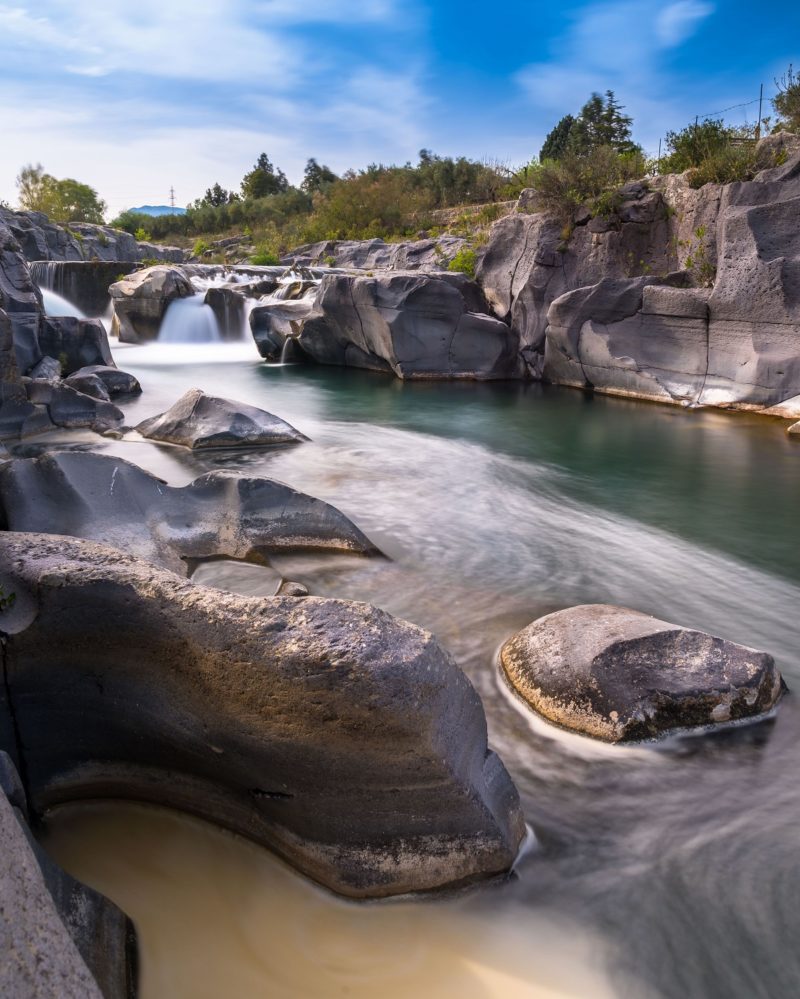
The distinctive feature this site is renowned for has to do with the comings and goings of many lava flows on the riverbed of the Alcantara during prehistory, transforming its path and surprisingly shaping the natural landscape.
When meeting basaltic lava (lacking silicon but filled with iron, magnesium and calcium), the river’s water immediately crystallizes it and turns it into prism, pentagon and hexagon shaped columns which precisely conjure up the molecular structure of its components!
And so it happened that over the millennia, these igneous rocks eventually hollowed out a canyon formed of dazzling gorges, namely the Alcantara Gorges (also known as the Larderia Gorges), delineating shapes each one being more stunning than the last. For that matter, studying these structures is what allowed the geologists to carry out accurate analyses on the evolution of the Etna volcano, as well as the series of its most outstanding lava flows throughout the ages.
The Alcantara Gorges are somehow the archive storing Etna’s lava flows...
In the highest part of the valley, the flow of the riverbed results from rainwater. In its lowest part, the underground waters of Etna arise before mixing with rainwater. And so heaven and earth get to meet each other...
This is why this watercourse has been given the status of “permanent” river, being among Sicily’s main ones and the only protected by a river park.
A landscape both narrow and gigantic, on the outskirts of Naxos
It is thus about fifteen kilometers from Naxos (between Taormina and Catania) that you can marvel at these canyons: with their narrow walls sometimes spaced out by barely 4 or 5 meters, this out-of-a-kind landscape calls upon you to lift your head up towards these natural patterns of basaltic organs. Depending on where you lay your eyes (or your imagination) upon, you will see harps, fans or stacks of wood.
It is in Motta Camastra that you will find the only lava tube cave of the tour, called Grotta dei Cento Cavalli and strikingly out of proportion.

One of the gorges has its own specificity: it was not hollowed out by the water flow over the millennia, but by an earthquake which supposedly broke an ancient lava flow coming down from Etna and thus made room for the river to seep into.
Every last one of these phenomena caused by Mother Nature reminds us how insignificant we are on a world scale.
For that matter, the most famous and impressive gorge is located in Fondaco Motta, one of Motta Camastra’s hamlets, and is more than 5 kilometers long. The first 3 kilometers can be crossed easily.
The water is also renowned for its temperature so low than only a few adventurers dare sink into.
The countless things to do in the Alcantara River Park
All sorts of activities are held within the park:
- hiking on the various protected paths
- body rafting
- canyoning
- tubing
- visiting the waterfalls and hidden gullies
- bike rides
Besides, travelers obviously have to go explore those little villages that are an integral part of the protected area, and enjoy the local delicacies and specialties—especially the delicious nuts of Motta Camastra. Spending a few nights within the park is without any doubt the best experience one can have in Sicily so as to reconnect with what matters the most and to recharge their batteries.

The wide diversity of flora and fauna
Concerning flora and fauna in the area, they remain untouched and protected along the banks, where you will find many species valued by naturalists: birds of prey such as peregrine falcons, kestrels and hobbies, wood pigeons, doves and kingfishers; and other migratory species that come to nest near the mouth of the river, like rock partridges and ravens.
But you can also come across hedgehogs, dormice, foxes and wildcats. On top of that, the Alcantara is the living space of typical frogs of the Mediterranean Basin, or leopard snakes which are rare and harmless reptiles.
As for the indigenous forest, it has been supplanted by the scrubland. There are still Oriental plane trees, brooms and peonies, as well as a wide variety of colorful flowers: violets, poppies, anemones, myrtles, wild roses, prickly pears, terebinths, laurels, orchids… Fields of citrus fruits and lemon trees, orange trees and vineyards show up here and there, like brushstrokes left by a painter on his canvas.
The local biodiversity also includes many medicinal plants that are used to produce natural remedies.
Myths and legends of the Alcantara
Legend has it that the wrath of Gods purportedly struck down a crooked farmer, and in so doing hollowed out the Alcantara Gorges. The boor altered the grain container of his blind brother for him to get less. Thus, the farmer enjoyed bountiful crops while his brother had to make do with only a few grains. A lightning struck him down and turned his heap of grain in a mountain of brown earth from which some lava flow spread all over the valley.
Even for a legend, it is still close to reality for one having in mind the eruption of the little Mojo mount, an old volcano, which really happened during the 3rd millennium BC. This eruption brought about an impressive lava flow which went all through the valley down to the sea.
While the rocks were still incandescent, an earthquake caused by the eruption fashioned their shapes. It entailed a deep and very narrow crack in the ground in which the powerful waters of the Alcantara river slipped, hollowing out the walls of the canyon even deeper.
And so were the rocks shaped, giving birth to the amazing Gorges that we know today.
As for the myth, it involves as so often a love story; the one between Vulcan and Venus.
The goddess of love and seduction enjoyed bathing in the river’s waters, so much that Vulcan the god of fire, out of the passionate love he felt for his beloved, heated the water up permanently, just for her. However, Venus had an affair in these waters. When Vulcan came to know that, he froze the river’s water forever so as to take revenge on her for her betrayal.
Since then, the waters of the Alcantara Gorges are said to have miraculous healing powers, even giving their virility and their virginity back to men and women who dare have a bath in the chilly waters in the name of their love.
And you, will you dare have a bath there?
Useful information
River Park of the Alcantara: Via dei Mulini – 98034 Francavilla di Sicilia (ME)
- Phone: 0942/388020
- Email: info@parcoalcantara.it
- Website: https://www.golealcantara.it/ - http://www.parcoalcantara.it/
